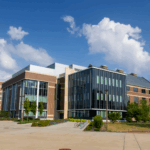Author: Greg Sisson, Chief Claims Officer – TPA
The worst of the COVID-19 pandemic might be behind us, but are you prepared for the next public health crisis? The risk of uncertainty is an expensive one, and to not “expect the unexpected” results in a far heftier price. The current inflationary environment on the heels of COVID-19 is a prime example of such.
While we are all likely sick of talking about the pandemic, the reality is that it brought a fresh onslaught of risks and exposed a long list of challenges that could impact municipalities for decades to come. From infrastructure damage to emerging technology, workers’ compensation, discrimination and cyber risk, public municipalities have never been so vulnerable to risk.
In order to know where to start in future-proofing, we must first analyze the risks currently impacting municipalities and their constituents:
Extreme Weather
By 2030, the frequency of weather events such as heatwaves, droughts and extreme rainstorms will all more than double (1). These events have far reaching impacts on every community. Droughts can harm food production and human health. Flooding can lead to disease spread and damage to infrastructure. Many communities aren’t prepared to face climate-related threats, which will cost their communities even more if they don’t prepare now.
Cyber Attacks
Any organization that stores sensitive or personal information such as addresses, social security numbers or payment details are at risk from cyber criminals who try to steal data from your computer systems. Most commonly using ransomware, cyber criminals on average demand more than $200,000 in exchange for that information (2). The cost of these breaches goes far beyond the original act itself and can have lasting consequences for your community in the amount of millions taxpayer dollars. Last year, the average cost of a data breach was just under $4 million dollars. (3)
While the above may be daunting, there are immediate steps municipalities can take to minimize liability and build business continuity planning into their strategy:
Climate Preparedness
Every community faces unique environmental challenges. In the event of an extreme weather event a successful response will be based on preparedness. Careful planning can save lives and prevent damage to vital infrastructure. Technology can help reduce complexity, increase communication, and assist those responsible for community safety.
Cyber Prevention
There steps to help prevent a cyber-attack including securing your systems and data using multi-factor authentication (MFA). MFA is a security method that can help stop cyber-attacks. Maintaining your computer equipment, conducting a risk assessment of each system, and evaluating your technology solutions providers are additional ways to help mitigate the risk (4).
Ultimately, those who fail to learn the lessons of the pandemic and choose not to put the right protocols in place greatly increase the cost and risk exposure for public municipalities. But with these steps to future-proof and risk management, public municipalities can better stay ahead of the next health crisis, recession, and more.
The Accelerating Frequency of Extreme Weather Events (visualcapitalist.com) (1)
Ransomware demands up by 43% so far in 2021, Coveware says – CyberScoop (2)
Cost of a data breach 2022 | IBM (3)
How Cities, Counties and Municipalities Can Reduce Cost of Risk | Travelers Insurance


